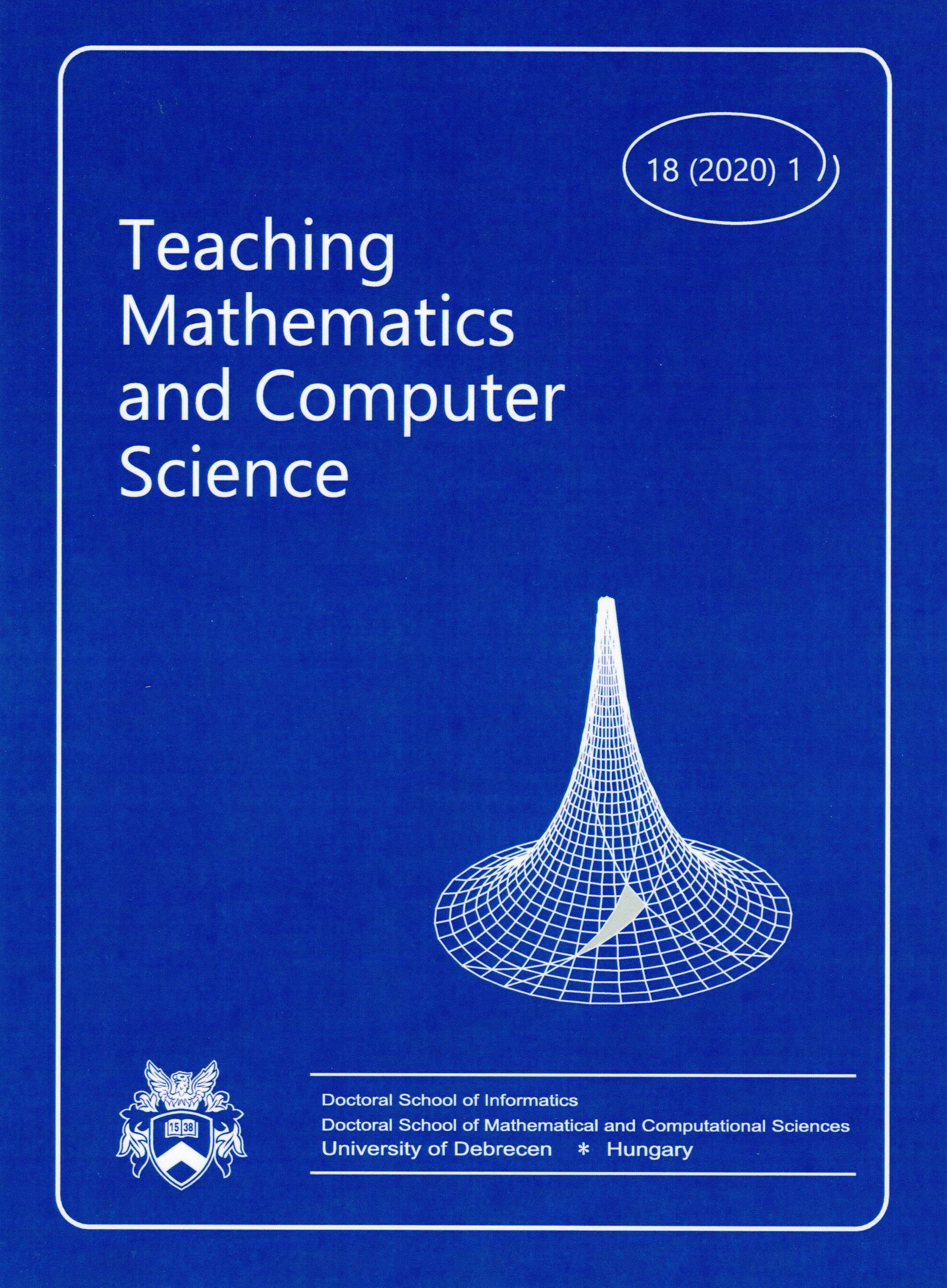Vol. 18 No. 1 (2020)
##issue.tableOfContents##
Articles
-
Teaching model-based testing
1-17Views:1704Different testing methodologies should play an important role in the education of informatics. In the model-based testing (MBT) approach, the specification of the system is described with a formal model. This model can be used to revise the correctness of the specification and as a starting point for automatic test generation. The main problem with MBT is however, that there is a huge gap between theory and practice and that this approach has a high learning curve. To cope with these problems, current paper shows, how the MBT approach can be introduced to students through a small scale example.
Subject Classification: P50
PDF577 -
Introductory Computer Programming Courses in Mathematics Curriculum
19-30Views:220We present the results of surveys and curricular research on introductory computer programming courses that are required or recommended for mathematics degrees at U.S. colleges and universities. Our target schools were those with populations between 5,000 and 20,000 undergraduate students. A key result is a synopsis of programming languages in use in these introductory courses with Java, Python and C + + holding the top three spots. We found that 85% of the 340 schools in our pool require or recommend an introductory programming course as a component of a mathematics degree. Furthermore, most of these introductory programming courses are taught by faculty outside of the mathematics department. These results indicate that mathematics faculty value computer programming and should be actively involved in setting learning outcomes, incorporating skills and concepts learned in introductory programming courses into subsequent mathematics courses, and determining programming languages in use.
Subject Classification: 97D30, 97P20, 97P40
PDF119 -
Word problems in different textbooks at the early stage of teaching mathematics comparative analysis
31-49Views:266In a previous research, Csíkos and Szitányi (2019) studied teachers’ views and pedagogical content knowledge on the teaching of mathematical word problems. While doing so, they reviewed and compared Eastern European textbooks of Romania, Russia, Slovakia, Croatia, and Hungary to see how world problem-solving strategies are presented in commonly used textbooks. Their results suggested that teachers, in general, agreed with the approach of the textbooks regarding the explicit solution strategies and the types of word problems used for teaching problem-solving. They also revealed that the majority of the participants agreed that a word problem-solving algorithm should be introduced to the students as early as in the first school year. These results have been presented at the Varga 100 Conference in November 2019. As the findings suggested a remarkable similarity between the Eastern European textbook approaches, in the current study we decided to conduct further research involving more textbooks from China, Finland, and the United States.
Subject Classification: 97U20, 08A50
PDF178 -
Guided Discovery in Hungarian Education Using Problem Threads: The Pósa Method in Secondary Mathematics Classrooms
51-67Views:229In Hungary, ‘guided discovery’ refers to instruction in which students learn mathematical concepts through task sequences that foster mathematical thinking. A prominent figure of guided discovery is Lajos Pósa, who developed his method to teach gifted students. Rather than teaching mathematics through thematic blocks, the Pósa Method employs webs of interconnected problem threads in which problems are built on each other, and different threads are presented simultaneously, so that students work on problems from multiple threads at the same time. It was found that this method has been successful as extracurricular training for gifted students since the 1980s; however since 2017, as part of an ongoing research, the method has been applied to mainstream curriculum in two public secondary school classrooms. The present paper examines the design and implementation processes of problem threads in this public secondary school context.
Subject Classification: 97D40
PDF212 -
Our digital education habits in the light of their environmental impact: the role of green computing in education
69-86Views:233With the increasing use of IT tools, the environmental impacts they generate have also increased. Education is increasingly relying on digital tools to become a major emitter of CO2 itself. Therefore, the task of education is to teach future generations how to use IT tools efficiently while being environmentally aware. In addition to some forms of green computing, we show the level and ratio of those teachers who have corresponding IT knowledge in the Hungarian education. In this study, we present the justification of the problem through a case study, which estimates the Internet traffic of a website streaming popular educational resources. In addition, we will examine the extent to which national and international educational organization and guidance documents address the development of digital environmentally aware thinking. Based on the content of this study, we suggest some considerations for content developers to decide if they really need to create the digital content.
Subject Classification: 97P99, 94-06, 94-02
PDF179







